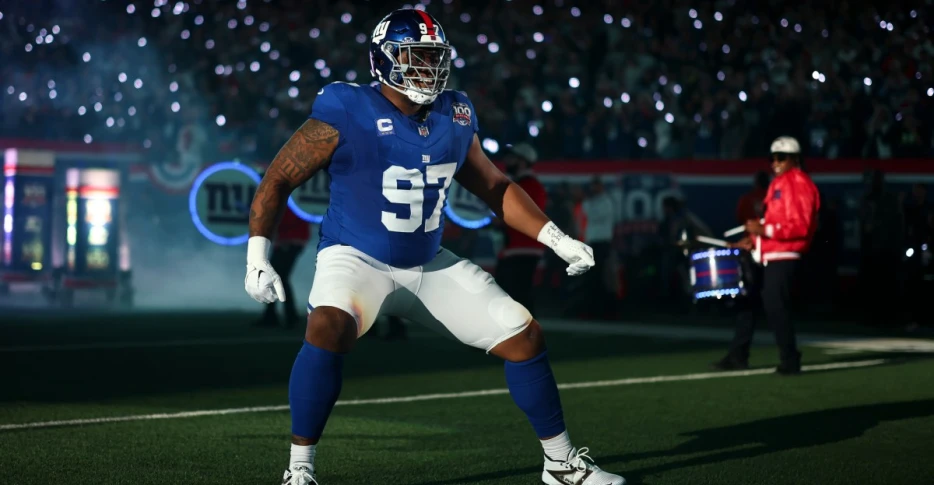
 Big Blue View
Big Blue View
The prospects for the 2025 New York Giants’ defense are a tale of two units. Up front, the Giants look like they could have a devastatingly effective pass rush: Dexter Lawrence, arguably the best pass-rushing interior lineman in the NFL; Brian Burns and Kayvon Thibodeaux on the edge, who together constituted one of the better pairs of edges in the league last season; and new supporting players Chauncey Gholston and Darius Alexander. Add to that the No. 3 draft pick, Abdul Carter, who has terrorized Giants’ offensive linemen thus far in training camp, and the possibility that the Giants’ pass rush could be the best in the NFL is not all that far-fetched.
It’s the back end of the defense that is the big question mark. Dru Phillips and Tyler Nubin had very good rookie seasons, but both of them did their best work in the box or the slot and neither was a ballhawk. On the outside, Deonte Banks was a disaster last season and hasn’t yet inspired confidence during training camp. Free agent signing Paulson Adebo is the new CB1, but he’s coming back from injury and tied for the league lead last season in frequency of being targeted (4.6 snaps per target). Jevon Holland, the new free safety, followed up his elite 2023 with a subpar 2024 in which he had a 111.3 passer rating against.
As we discussed a while back, defensive back performance is more variable and unpredictable from year to year than that of wide receivers, so it’s hard to say whether the 2025 Giants’ defensive backfield is going to be a strength or liability, even though there is talent on the roster.
The question I’d like to ask here is: How are a defense’s pass rush and coverage related in making a defense successful or not? First, let’s look at the quality of the pass rush of NFL teams to understand what makes for an effective pass rush. I’ll use the Pro Football Focus team pass rush grade for this purpose, but before I do, it’s worth understanding how PFF defines their pass rush grade:
To earn a positive grade, a rusher must win his block or affect the play beyond the base level of expectations on a given passing play. The quicker the win, the better the grade.
PFF’s grade is all about a pass rusher beating his blocker. Most of the attention for pass rushers comes from sacks, and indeed sacks are the most impactful pass rush outcomes in general. Sacks occur for various reasons, though, some of them having less to do with the rusher and more to do with the quarterback running into the sack, or holding the ball too long, etc. Not surprisingly, then, the correlation between team sacks and team pass rush grade (.41) is smaller than the correlation between pass rush grade and pressure percentage (.47). (Sacks and pressure rates were obtained from Pro Football Reference’s team defense rankings.) But just beating your man...